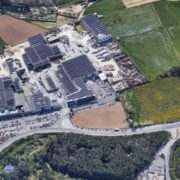PR 31/19 | Partial Review of the Ta’ Qali Action Plan does not consider the national and public interest
In September, the Planning Authority published its proposals for a Partial Review of the Ta’ Qali Action Plan.
The review concerns an area of approximately 60,000 square metres located adjacent to the Embassy of the United States, and proposes to designate such land as a Commercial Area, with an overall building height of 17.5 metres.
The Kamra noted that “across the developed world, out-of-town commercial centres are largely being abandoned in favour of rehabilitated inner-city or urban facilities. These reinforce the desirability of city living and cut down on the vehicular traffic and the attendant pollution and traffic congestion that are inevitably caused by large regional commercial developments located outside the urban area.”
The Kamra tal-Periti further noted that “one of the justifications presented in favour of the proposals is that the site has outlived its usefulness in the industrial context. Whilst recognising that it would, perhaps, be unrealistic to hope for the area to be returned to its undeveloped state, it is pointed out that the general area is earmarked as a Rural Area and the Ta’ Qali National Recreation Centre, which includes no commercial hubs but only enterprise hubs (i.e. the existing industrial areas). It is therefore felt that the area should be re-developed into uses that are complementary to the sports facilities around the National Stadium, and to the adjacent Park tal-Familja. The emphasis on commercial development is therefore questioned in this regard, as is the extent to which the public interest and that of the environment in general were considered.”
The proposed revision is premature and lacking in proper studies that would normally arise in a serious and well-considered approach. The Kamra pointed out that allowing intensification is not the solution to the Authority’s claim that the existing industrial use is redundant, and that the proposals appear to be directed more towards appeasing a major private landowner and facilitating their interests than achieving any planning gains or safeguarding the national interest and that of the public at large.








